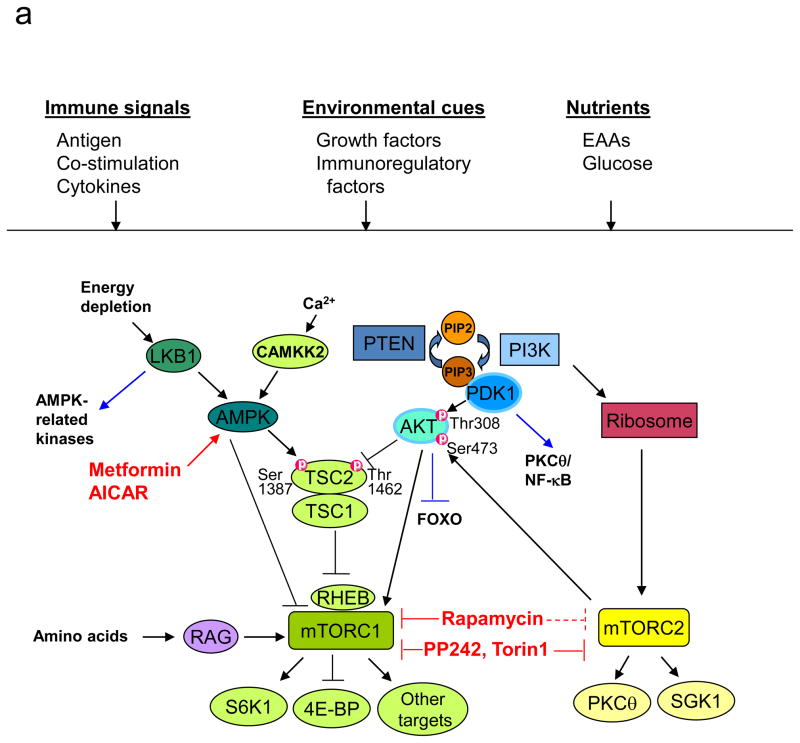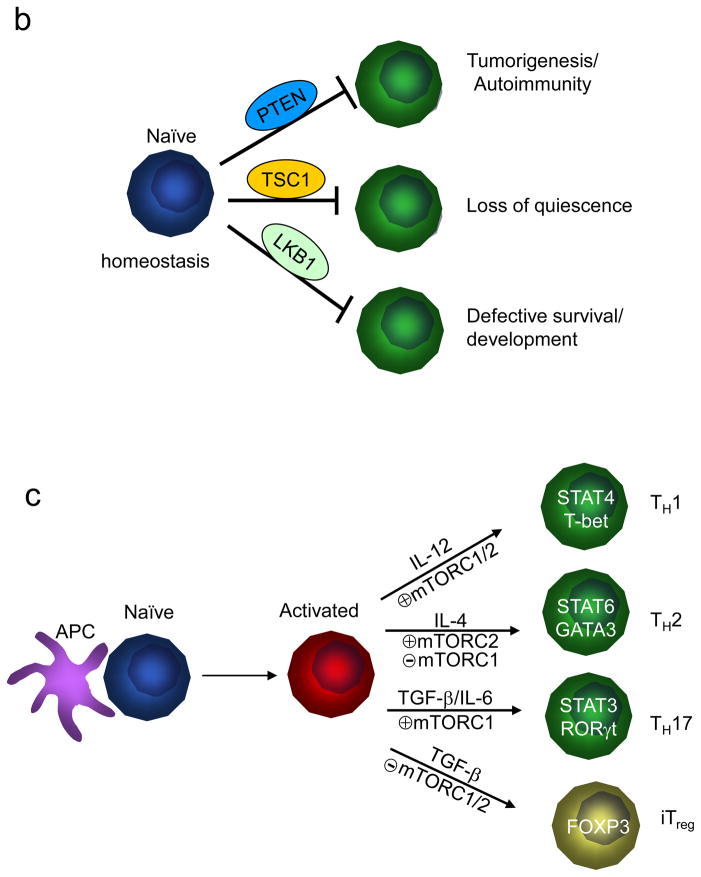Figure 1. Regulation and function of mTOR signalling pathways in T cells.
(a) Components of mTOR signalling. In T cells, mammalian target of rapamycin (mTOR) can be activated by multiple signals, including the conventionally defined signals 1–3 (antigenic stimulation, co-stimulation and cytokines), growth factors and immunomodulatory factors (such as leptin and sphingosine 1-phosphate (S1P)), and nutrients. The tuberous sclerosis 1 (TSC1)–TSC2 complex integrates signals from phosphoinositide 3-kinase (PI3K)–AKT and liver kinase B1 (LKB1)–AMP-activated protein kinase (AMPK) pathways, and this is mediated by reciprocal regulation of TSC2 activity through AKT-dependent Thr1462 and AMPK-dependent Ser1387 phosphorylation. Upon antigen stimulation, TSC is inactivated by T cell receptor (TCR) signals to mediate mTORC1 activation, but TSC function is maintained in naïve T cells to keep mTOR complex 1 (mTORC1) in check. Additionally, AKT and AMPK can directly modulate mTORC1 functions independently of TSC and RAS homologue enriched in brain (RHEB), and amino acids activate mTORC1 via the RAG family of small GTPases. mTORC1 is best known for its function to promote translation initiation and protein synthesis by directly phosphorylating the substrates S6 kinases (S6Ks) and eIF4E-binding proteins (4E-BPs). Additional mTORC1 targets include the regulatory proteins in cell signalling, metabolism and autophagy. mTORC2 is important for full activation of AKT by inducing Ser473 phosphorylation (thus AKT can be both upstream of mTORC1 and downstream of mTORC2) and for phosphorylation of various protein kinase C (PKC) isoforms including the activation of PKCθ/NF-κB in T cells and serum and glucocorticoid-inducible kinase 1 (SGK1). EAA, essential amino acid; PIP2, phosphatidylinositol-4,5-bisphosphate; PIP3, phosphatidylinositol-3,4,5-triphosphate.
(b) Control of T cell homeostasis by active inhibition of mTOR. Under steady state, negative inhibitory molecules for mTOR actively maintain the homeostasis of T cells in the thymus and periphery by preventing them from engaging alternative paths. Although phosphatase and tensin homologue (PTEN), TSC1 and LKB1 have shared capacity to inactivate mTOR, they exert distinct effects to enforce T cell homeostasis.
(c) Role of mTORC1 and mTORC2 in functional differentiation of CD4+ T cells. Following antigen stimulation, mTOR signalling promotes differentiation of T helper 1 (TH1), TH2 and TH17 effector cells, and inhibits the induction of regulatory T (TReg) cells.


